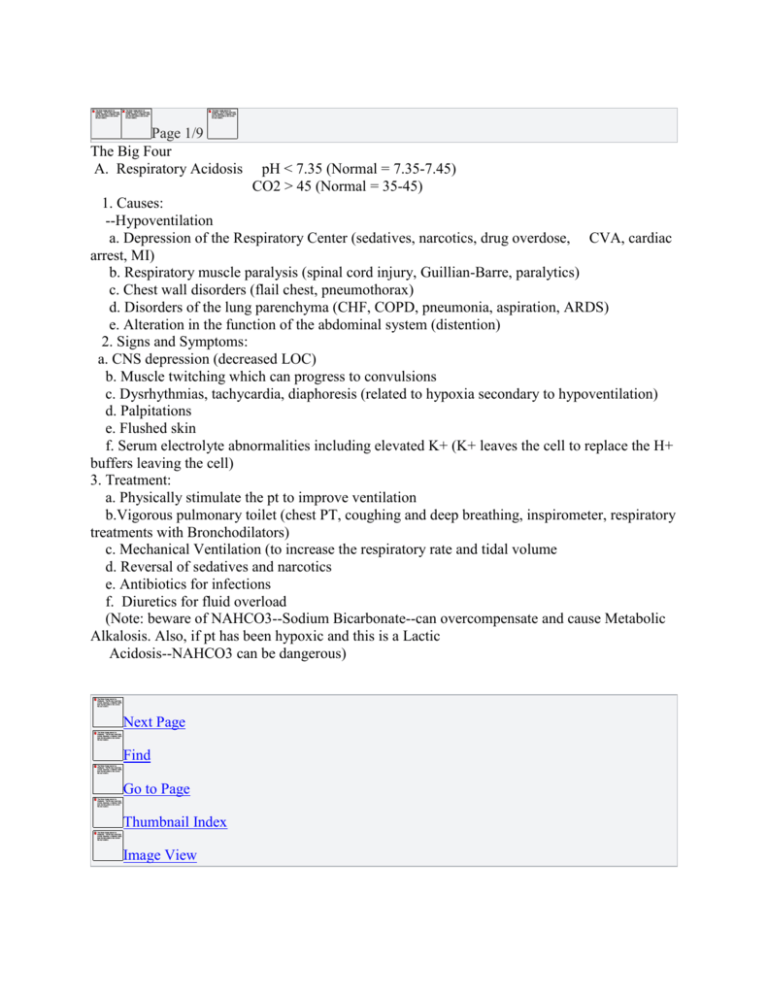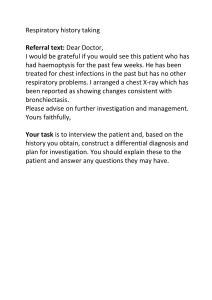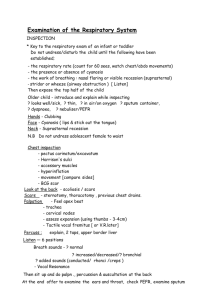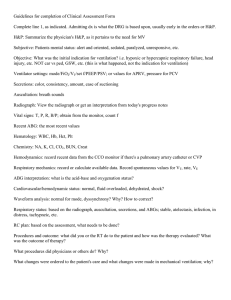Acid Base Balance
advertisement

Page 1/9 The Big Four A. Respiratory Acidosis pH < 7.35 (Normal = 7.35-7.45) CO2 > 45 (Normal = 35-45) 1. Causes: --Hypoventilation a. Depression of the Respiratory Center (sedatives, narcotics, drug overdose, CVA, cardiac arrest, MI) b. Respiratory muscle paralysis (spinal cord injury, Guillian-Barre, paralytics) c. Chest wall disorders (flail chest, pneumothorax) d. Disorders of the lung parenchyma (CHF, COPD, pneumonia, aspiration, ARDS) e. Alteration in the function of the abdominal system (distention) 2. Signs and Symptoms: a. CNS depression (decreased LOC) b. Muscle twitching which can progress to convulsions c. Dysrhythmias, tachycardia, diaphoresis (related to hypoxia secondary to hypoventilation) d. Palpitations e. Flushed skin f. Serum electrolyte abnormalities including elevated K+ (K+ leaves the cell to replace the H+ buffers leaving the cell) 3. Treatment: a. Physically stimulate the pt to improve ventilation b.Vigorous pulmonary toilet (chest PT, coughing and deep breathing, inspirometer, respiratory treatments with Bronchodilators) c. Mechanical Ventilation (to increase the respiratory rate and tidal volume d. Reversal of sedatives and narcotics e. Antibiotics for infections f. Diuretics for fluid overload (Note: beware of NAHCO3--Sodium Bicarbonate--can overcompensate and cause Metabolic Alkalosis. Also, if pt has been hypoxic and this is a Lactic Acidosis--NAHCO3 can be dangerous) Next Page Find Go to Page Thumbnail Index Image View Download a Copy Close











